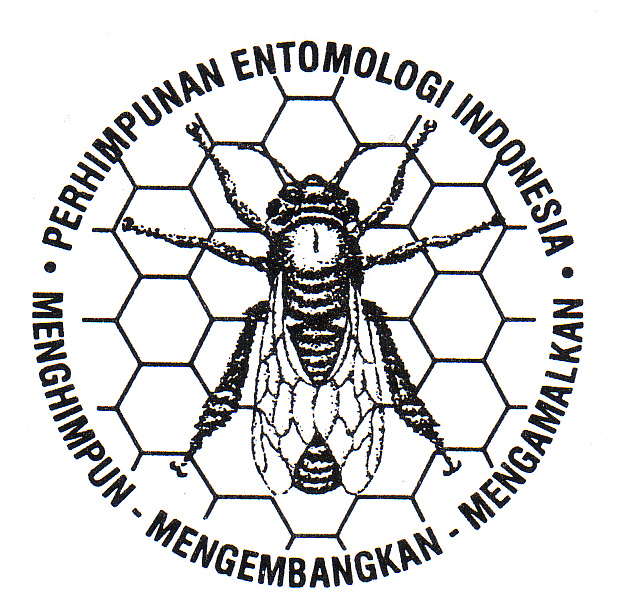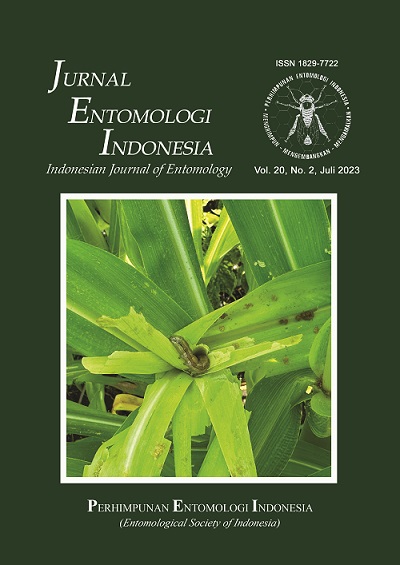Kajian aspek keamanan nyamuk Aedes aegypti Linnaeus ber-Wolbachia di Yogyakarta, Indonesia
Assessing the safety of Wolbachia-infected Aedes aegypti Linnaeus mosquitoes in Yogyakarta, Indonesia
DOI:
https://doi.org/10.5994/jei.20.2.117Keywords:
Aedes aegypti, dengue, Indonesia, safety, WolbachiaAbstract
Dengue prevention efforts are limited to the control strategies of its vector and the management of breeding sites. New alternatives for dengue vector control that are sustainable and more environmentally friendly are needed to complement the government’s current efforts. Research on Wolbachia-infected Aedes aegypti Linnaeus mosquitoes as an alternative biocontrol strategy has been performed in Yogyakarta City. However, one of the concerns of the community members and stakeholders about this technology is the safety aspect regarding the transmission of Wolbachia to other species and the possibility that humans will contract Wolbachia. This study aimed to address these concerns, namely to find out whether horizontal transmission of Wolbachia occurred from A. aegypti that were released to other species and whether residents living in the released areas were infected with Wolbachia. The research was conducted in Dusun Nogotirto and Dusun Kronggahan (Sleman Regency), as well as in Dusun Jomblangan and Dusun Singosaren (Bantul Regency), Yogyakarta Special Province. Wolbachia qPCR screening using the target gene WD0513 was performed on 922 Culex quinquefasciatus Say and 331 Aedes albopictus (Skuse). ELISA test was carried out on 190 pairs of plasma samples, namely the sample before the Wolbachia frequency was established (still <80%) and the sample after it was established (>80%). The results showed no evidence of Wolbachia transfer from Wolbachia-infected A. aegypti to other mosquito species coexisting in the same habitat or to humans. This study corroborates the safety evidence of Wolbachia-infected A. aegypti technology as an alternative to control dengue virus transmission
Downloads
Published
How to Cite
Issue
Section
License
Copyright (c) 2023 Utari Saraswati, Endah Supriyati, Ayu Rahayu, Anwar Rovik, Irianti Kurniasari, Rio Hermantara, Dian Aruni Kumalawati, Edwin Widyanto Daniwijaya, Iva Fitriana, Nida Budiwati Pramuko, Citra Indriani, Dwi Satria Wardana, Warsito Tantowijoyo, Riris Andono Ahmad, Adi Utarini, Eggi Arguni

This work is licensed under a Creative Commons Attribution 4.0 International License.
Authors who publish with this journal agree to the following terms:
- Authors retain copyright and grant the journal right of first publication with the work simultaneously licensed under a Creative Commons Attribution 4.0 International License that allows others to share the work with an acknowledgement of the work's authorship and initial publication in this journal.
- Authors are able to enter into separate, additional contractual arrangements for the non-exclusive distribution of the journal's published version of the work (e.g., post it to an institutional repository or publish it in a book), with an acknowledgement of its initial publication in this journal.
- Authors are permitted and encouraged to post their work online (e.g., in institutional repositories or on their website) prior to and during the submission process, as it can lead to productive exchanges, as well as earlier and greater citation of published work (See The Effect of Open Access).








